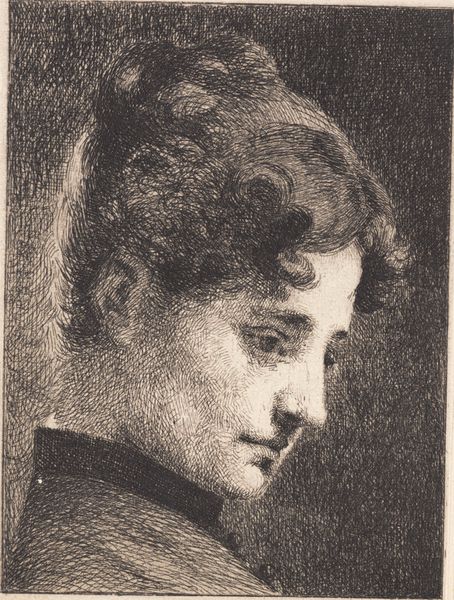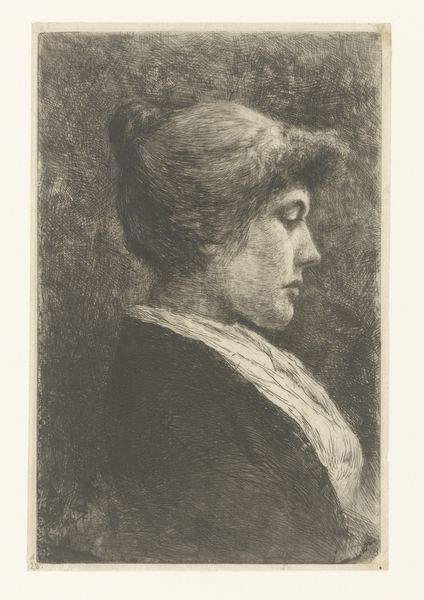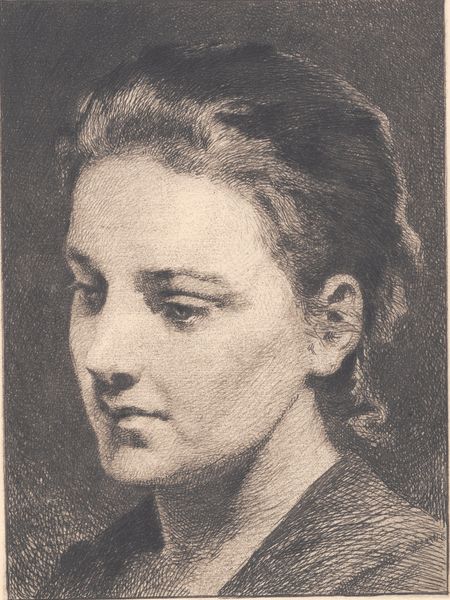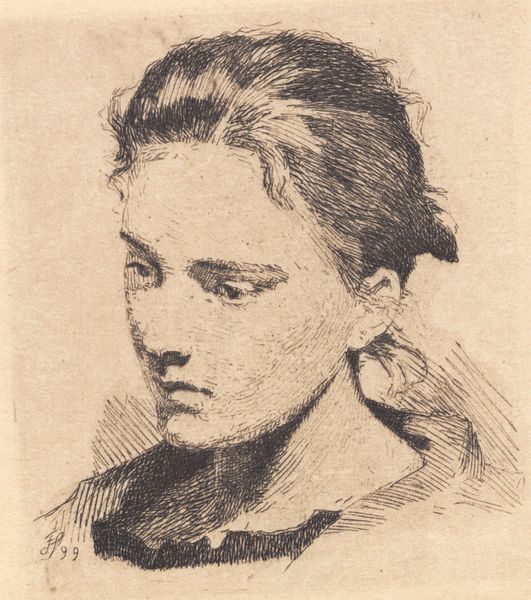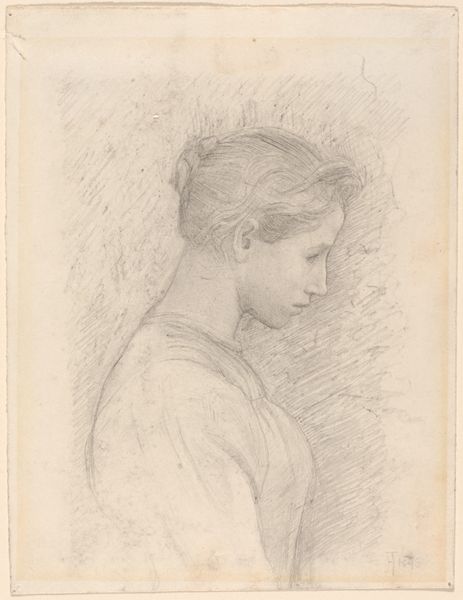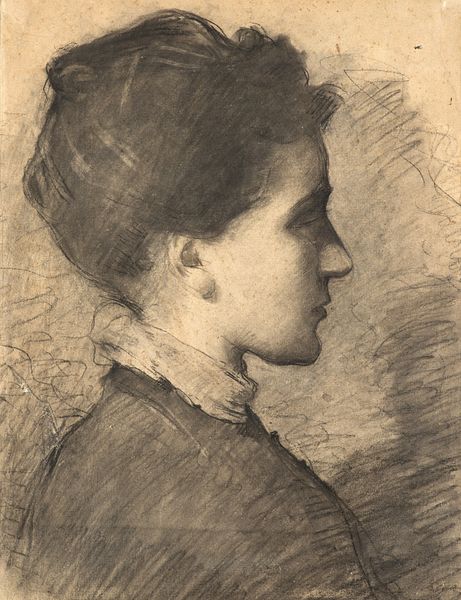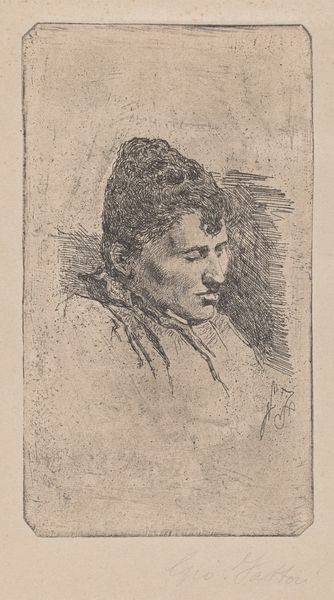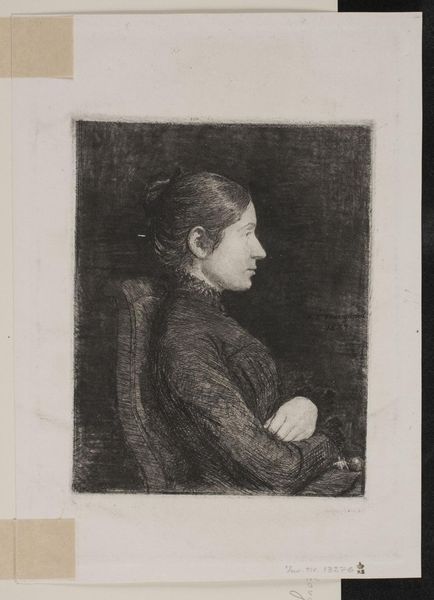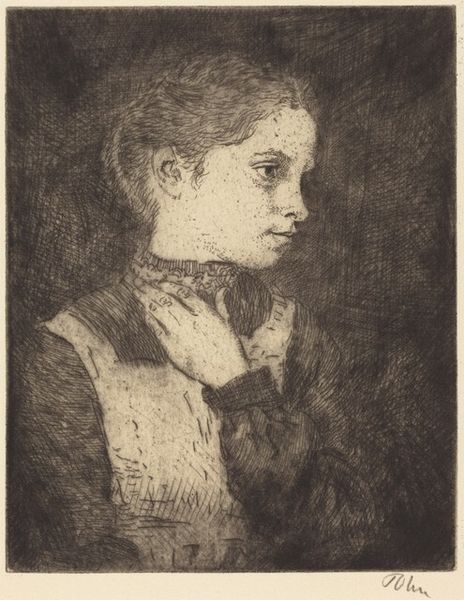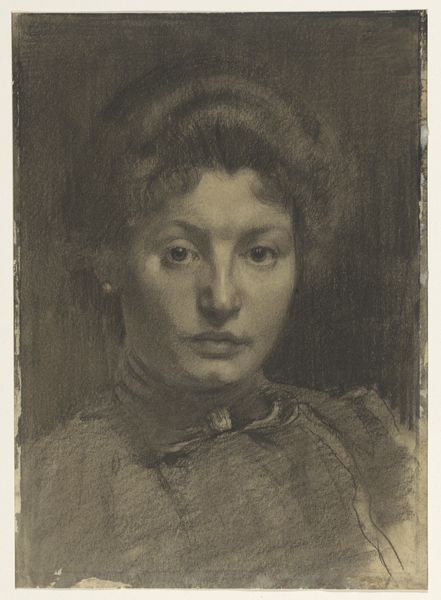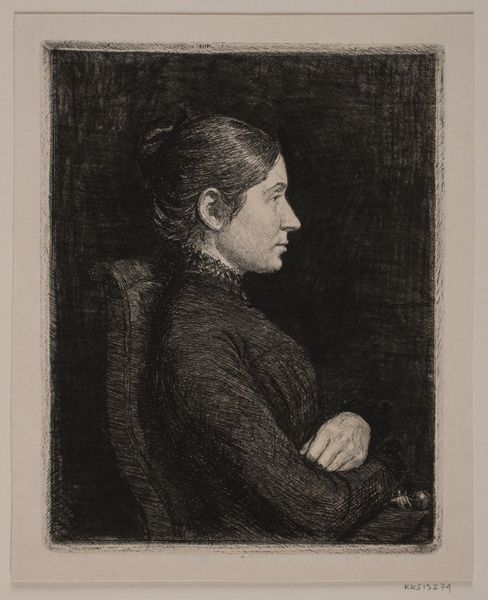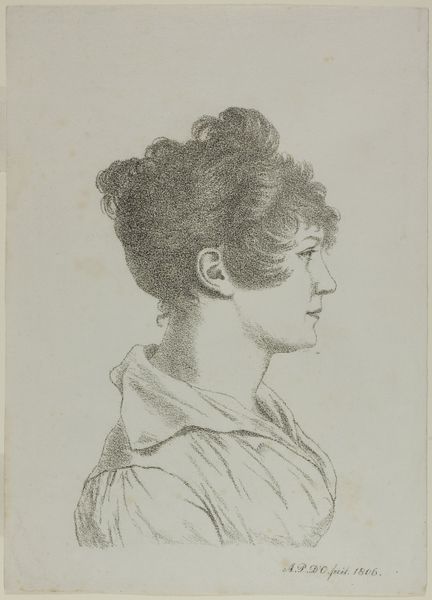
print, etching
#
portrait
# print
#
etching
#
figuration
#
portrait drawing
Dimensions: 132 mm (height) x 104 mm (width) (plademaal)
Curator: What a compelling work! The museum label tells me that we are looking at “Profilhoved af en ung pige, vendt mod højre," or "Profile Head of a Young Girl, Facing Right,” an 1887 etching by Frans Schwartz. Editor: My initial impression is one of melancholic intimacy. The delicate lines create such a quiet and personal space around this young woman. Curator: I'm intrigued by the choice of etching as a medium, especially during this period. Prints, historically, served a democratic purpose, making art accessible beyond elite circles. How do you think Schwartz's choice contributes to the portrait’s reception? Editor: It makes me wonder about Schwartz's artistic circle and the resources he would have had access to, plus, the dissemination of images within the Danish art scene at the time. Etchings offered reproducibility, a method of sharing work but the labor intensive creation also hints at value beyond the monetary, don't you think? Curator: Absolutely. Consider the role of art academies during the late 19th century. A work like this would have likely been critiqued on its technical merit, but also in its adherence to, or rebellion against, established academic conventions. There’s a push and pull visible here between tradition and experimentation. The intense labor of crafting the printing plate adds a material depth often absent in quick sketches. Editor: Agreed. And it would be really interesting to explore the social history here—to what extent did representations of women shift from purely allegorical or symbolic roles to more personal portraits? Curator: This touches on something vital—the shifting social role of women in late 19th century Denmark and, more broadly, in Europe. The quiet intensity of her gaze, the vulnerability…It avoids grand narrative, but speaks volumes. It's intimate without being overtly sexualized. The soft glow suggests domestic spaces. Editor: Yes, there is so much packed into such a small, personal work. It reminds us that even within traditional forms, artists were negotiating their place and time. Thank you for providing a closer context of how these materials interact to help the meaning grow. Curator: Likewise, by reflecting on art’s reception through history, we bring forward some hidden, and occasionally forgotten aspects of art as object.
Comments
No comments
Be the first to comment and join the conversation on the ultimate creative platform.
